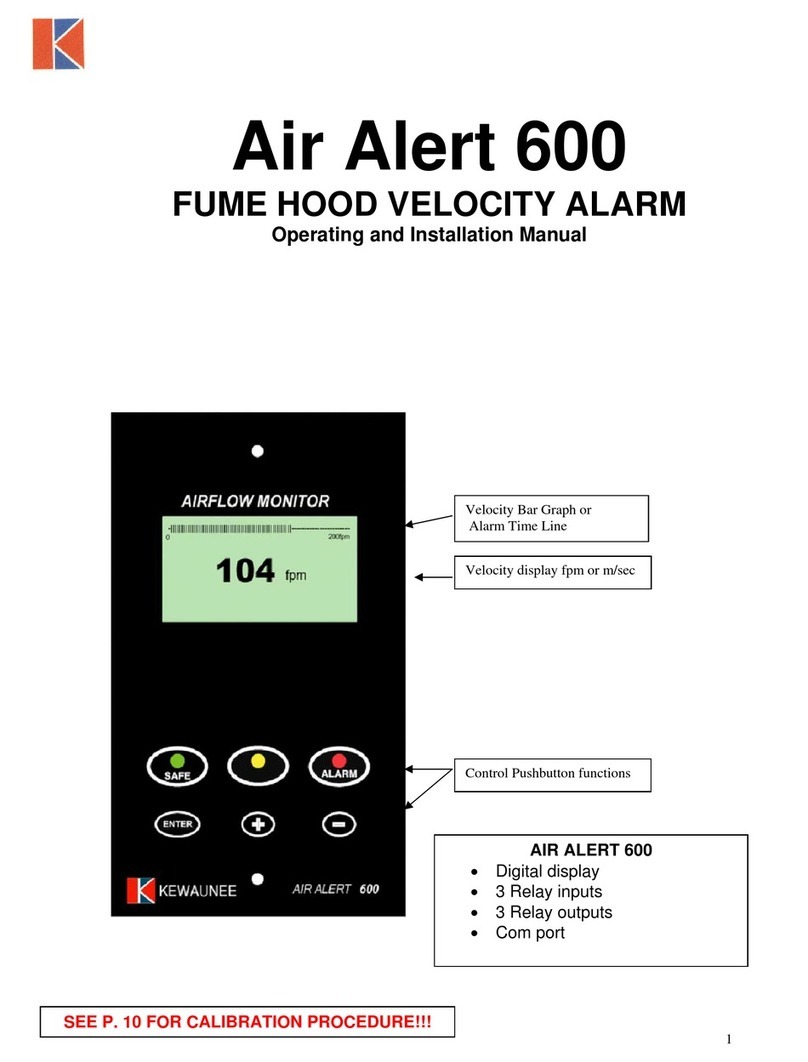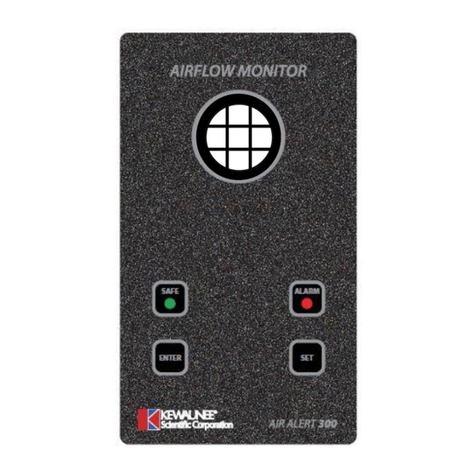8
1.6 Electrical Safety
The Airflow Monitor and associated equipment are designed to protect the user from
potential electrical hazards. This section describes some recommended electrical safety
practices.
WARNING
Lethal voltages are present at certain points within the equipment.
When the equipment is connected to mains power, removing the
equipment covers is likely to expose live parts.
Even when the power switch is off, high voltages can still be present
– capacitors within the equipment may still be charged even if the
equipment has been disconnected from all live voltage sources.
The Airflow Monitor and associated equipment must be correctly connected to a suitable
electrical supply. The supply must have a correctly installed protective conductor (earth or
ground) and must be installed and checked by a qualified electrician before initial power up.
WARNING
Any interruption of the protective conductor inside or outside the
Airflow Monitor, or disconnection of the protective conductor terminal
is likely to make the equipment dangerous.
Intentional interruption of the protective conductor is prohibited.
WARNING
If the mains power supply has to be replaced, ensure that the
replacement power supply is appropriately rated and approved for
the intended use.
WARNING
To prevent potential personal injury and damage to the equipment,
switch OFF all components in the system and disconnect them from
the mains power supply before altering, or making any new electrical
connections.
When working with the Airflow Monitor System:
•Connect the equipment to a correctly installed mains power outlet that has a
protective conductor connection.
•Do not operate the equipment with any covers or internal parts removed.
•Disconnect the equipment from all live voltage sources before opening it to make any
adjustments, replacements, maintenance or repair. If the opened equipment must be
operated for further adjustment, maintenance or repair, this must only be done by a
supplier’s Service Engineer.
If it is possible that the equipment is no longer electrically safe for use, make the equipment
inoperative and secure it against any unauthorised or unintentional operation.





























